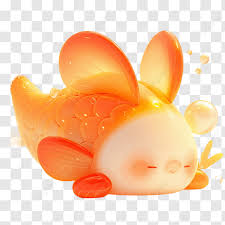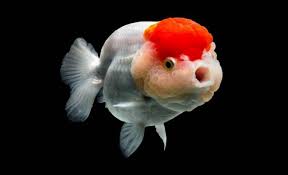
Chinese tea is one of the most celebrated beverages globally, appreciated not only for its rich flavor but also for its cultural significance and health benefits. With a history spanning thousands of years, the diversity of Chinese tea, particularly fresh tea, offers a wide array of aromas, flavors, and types. However, due to the rising popularity of Chinese tea worldwide, it is essential to know how to differentiate high-quality tea from lower-quality alternatives. The quality of Chinese fresh tea can affect its taste, aroma, and health benefits, which is why tea enthusiasts and consumers alike need to be informed when purchasing this revered product. This article will guide you through various factors to help you identify premium Chinese fresh tea.
Understanding Chinese Tea Categories
Before diving into the characteristics of high-quality Chinese tea, it’s important to understand the basic categories of Chinese tea, as the quality indicators can vary between types. Chinese tea can be classified into six primary types based on how it is processed:
- Green Tea: The least processed tea, retaining the natural color of the leaves. Famous examples include Longjing (Dragon Well) and Bai Mu Dan (White Peony).
- White Tea: Slightly more processed than green tea, with a delicate flavor. Bai Hao Yin Zhen (Silver Needle) is a well-known variety.
- Oolong Tea: Semi-oxidized, offering a balance between green and black tea characteristics. Tie Guan Yin (Iron Goddess) is one of the most popular oolongs.
- Black Tea: Fully oxidized and stronger in flavor, with varieties like Keemun and Lapsang Souchong.
- Yellow Tea: A rare and delicate tea, where the leaves are fermented slightly longer than green tea.
- Pu-erh Tea: A fermented tea from Yunnan, known for its earthy and robust flavor. It ages over time, improving in taste.
Factors to Determine High-Quality Chinese Fresh Tea
When selecting high-quality fresh tea, there are several key factors to consider: the appearance of the leaves, the aroma, the taste, the color of the liquor, and the source of the tea. These elements provide valuable insights into the tea’s quality and authenticity.
1. Leaf Appearance
The first step in assessing the quality of Chinese fresh tea is to examine the appearance of the tea leaves. High-quality tea leaves are carefully harvested and processed, which is reflected in their size, shape, and uniformity.
- Size and Shape: High-quality tea leaves are typically larger, with a well-formed shape. For green teas like Longjing, the leaves should be flat and sword-shaped, while oolong teas like Tie Guan Yin should be tightly rolled and uniform in shape.
- Color: The color of the leaves can indicate their freshness and the method of processing. For example, high-quality green tea should have a vibrant, bright green color, while white tea leaves tend to have a silvery or pale green hue. If the leaves are brown or yellow, they may be old or improperly stored.
- Leaf Quality: Premium fresh teas are often made from young, tender leaves and buds, which are plucked early in the season. These leaves are plumper, softer, and more aromatic. The leaves should not appear broken or crumbled; broken leaves often indicate lower-grade tea.
2. Aroma
The aroma of Chinese fresh tea is one of the most important indicators of its quality. The scent of the dry tea leaves, as well as the fragrance of the tea after it has been brewed, can reveal a lot about the freshness and quality.
- Dry Leaves: When you first open the tea package, high-quality tea leaves will emit a fresh, clean, and natural aroma. The scent should be strong and pleasant, with no hint of staleness or mold. For example, a high-quality Longjing tea will have a sweet, slightly roasted aroma, while a good Tie Guan Yin will have a floral and creamy fragrance.
- Brewed Tea: The aroma of brewed tea should be complex and layered. The fragrance will evolve as the tea steeps. Fresh tea should not have a musty or overly grassy smell, which can be a sign of poor storage or age.
3. Taste
The taste of Chinese fresh tea is perhaps the most telling indicator of its quality. A good tea should have a harmonious balance of flavors, with no bitterness or astringency unless it is an intentional characteristic (like in some green teas). The following are key points to consider when tasting the tea:
- Smoothness: High-quality fresh tea should feel smooth and pleasant in the mouth. The taste should be rich without being overpowering, with no harsh or artificial notes.
- Complexity: Premium tea should have a complex flavor profile, meaning it offers different layers of taste as it is sipped. For example, a high-quality oolong tea like Tie Guan Yin may have floral, creamy, and slightly fruity notes that unfold as you drink it.
- Aftertaste: A lasting, pleasant aftertaste is a hallmark of quality tea. The aftertaste, also called “hui gan,” should be sweet and lingering, especially for high-grade green teas like Longjing.
- No Bitterness or Astringency: While some teas naturally have a bit of bitterness (like certain green teas), top-tier fresh teas will have a more refined, balanced flavor. Excessive bitterness or astringency usually indicates poor-quality leaves or improper brewing.
4. Liquor Color
The color of the brewed tea, also known as the liquor, can also indicate its quality. The liquor should be clear and bright, free from cloudiness or murkiness. The specific color varies depending on the type of tea:
- Green Tea: High-quality green tea should have a vibrant, bright green or yellowish color.
- Oolong Tea: A well-brewed oolong tea will have a golden or amber hue, with no dullness.
- Black Tea: Premium black tea should have a deep, rich red or amber color.
- White Tea: The liquor of white tea will be pale yellow or light golden.
A cloudy or dull liquor may indicate low-quality tea, improper processing, or contamination during storage.
5. Tea Origin
The origin of the tea plays a significant role in determining its quality. The terroir, or the environmental conditions of the tea-growing region, significantly influences the flavor profile and the overall quality of the tea. High-quality Chinese fresh tea is typically sourced from renowned tea-producing regions in China.
- Famous Regions: Some of the most respected tea-growing areas in China include Hangzhou (Longjing tea), Fujian (Tie Guan Yin and Bai Mu Dan), Yunnan (Pu-erh tea), and Wuyi Mountains (Wuyi Rock Tea).
- Single-Origin Teas: High-quality teas are often from specific, well-known estates or villages that specialize in tea production. These estates have a long tradition of producing superior tea, and the leaves are often hand-plucked and processed with great care.
When purchasing fresh Chinese tea, always look for information about the tea’s origin, as the best teas typically come from these established regions.
6. Freshness and Storage
Freshness is crucial to the quality of Chinese tea. Tea, especially fresh green tea, loses its flavor and health benefits over time, so it is important to buy tea that is freshly harvested and properly stored. To ensure you are purchasing high-quality fresh tea, keep the following in mind:
- Harvesting Season: The best time to harvest tea is during the spring or early summer, when the leaves are young and tender. High-quality fresh tea is typically harvested in the first flush, which occurs early in the growing season. Make sure the tea you are buying is from the latest harvest, as older tea will have lost its freshness.
- Storage Conditions: Tea should be stored in a cool, dry, and dark place to preserve its freshness. If the tea has been improperly stored, it may have a stale or oxidized flavor. Always buy tea from reputable vendors who store their products under optimal conditions.
Conclusion
Identifying high-quality Chinese fresh tea involves a combination of factors, including the appearance of the leaves, the aroma, the taste, the color of the liquor, the tea’s origin, and its freshness. By paying attention to these elements, you can ensure that you are selecting premium tea that offers the best flavor, aroma, and health benefits. Whether you are a seasoned tea connoisseur or a newcomer to the world of Chinese tea, understanding these key characteristics will allow you to appreciate the full richness of China’s finest teas and ensure that you are purchasing only the best.









